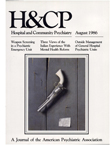Emergency Room Management of Conversion Disorders
Abstract
The authors present guidelines for diagnosing and managing conversion disorders in an emergency room setting. Assessment of the patient must be based on a careful physical and psychiatric evaluation that will identify any underlying physical illness or concurrent psychopathology. An accurate assessment is also vital to the clinician's decision about whether to use simple supportive interventions, to refer or hospitalize the patient, or to try to uncover the conflicts generating the conversion symptoms. If there are no contraindications to uncovering the conflicts, such as chronic symptomatology or a pathological family network, the clinician may use such techniques as hypnosis or a sodium amytal interview.
Access content
To read the fulltext, please use one of the options below to sign in or purchase access.- Personal login
- Institutional Login
- Sign in via OpenAthens
- Register for access
-
Please login/register if you wish to pair your device and check access availability.
Not a subscriber?
PsychiatryOnline subscription options offer access to the DSM-5 library, books, journals, CME, and patient resources. This all-in-one virtual library provides psychiatrists and mental health professionals with key resources for diagnosis, treatment, research, and professional development.
Need more help? PsychiatryOnline Customer Service may be reached by emailing [email protected] or by calling 800-368-5777 (in the U.S.) or 703-907-7322 (outside the U.S.).



